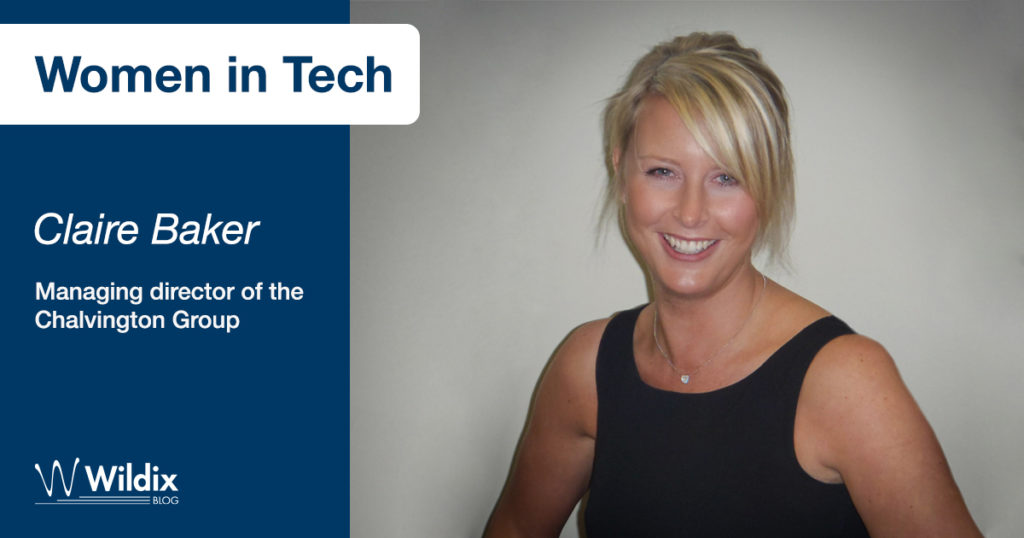 We’re talking today with Claire Baker, managing director of the Chalvington Group. The company had its origins in the company her father, Melvyn Baker, set up in the ‘80s, and he’d go on to create a telecommunications arm called Chalvington Communications to better serve a wider range of customers with the emerging technology of the early 2000s. Claire joined her father after she completed her BA in Business Studies at the University of North London, and after the various companies merged in 2012, she became the managing director. The company currently has 1,500 clients in the UK, generating £3.8 million in turnover as of 2020 and is a key partner with Wildix in the UK.
We’re talking today with Claire Baker, managing director of the Chalvington Group. The company had its origins in the company her father, Melvyn Baker, set up in the ‘80s, and he’d go on to create a telecommunications arm called Chalvington Communications to better serve a wider range of customers with the emerging technology of the early 2000s. Claire joined her father after she completed her BA in Business Studies at the University of North London, and after the various companies merged in 2012, she became the managing director. The company currently has 1,500 clients in the UK, generating £3.8 million in turnover as of 2020 and is a key partner with Wildix in the UK.
You’ve been immersed in the world of communications tech for well over 20 years. What are the key changes you’ve seen since the 2000s?
Claire: The most notable changes are in connectivity and cloud-based solutions. ISDN2/analogue technologies became extremely stale, and the industry was in need of some va-va voom. I feel the investment that has been made in connectivity infrastructure has given telecoms a new lease of life. Don’t get me wrong — VoIP has obviously been available for years but only in areas where you can ensure decent connectivity, which were, until quite recently, few and far between
The explosive growth of the internet created new opportunities, but they also involved new risks, particularly as companies struggled to predict which emerging technologies would thrive and which would fall by the wayside. How did you mitigate those risks, and what long-term strategies do you use to ensure your services are likely to remain relevant?
I’m lucky to have a really good team of IT and telecoms engineers around me who live and breathe new tech. Like any other business, we made some poor choices early on and learnt from those mistakes. Our process is to select a number of manufacturers, put the equipment or software through its paces, create a top three based on what we know would be important to our customers and then these are presented to the relevant managers and directors to make the ultimate decision. This formula has been tried and tested over the years.
There’s been a big push within tech, in general, to include more women in more senior positions. What challenges does the industry have regarding that, and how could they be solved?
Men sometimes believe women aren’t technical. Naturally, there are technical situations that I wouldn’t be familiar with at a grassroots level, but that’s why I have a trusted team around me, some of whom have worked with my father for the best part of 20 years. However, I have always been a firm believer that you don’t necessarily need to know how to do the job to be a good leader — but you need to be able to get work done through others.
Everyone comes into a new business with expectations, and some turn out to be accurate and some less so. What expectations did you have when you became a managing director, and how accurate were those expectations?
What I can say is to be successful, a managing director should be able to manage and advance a business’s strategic objectives and be the face of the business. However, within a small to medium-sized enterprise this, in real life, is far from what takes up most of my time. I find I wear multiple hats, which isn’t necessarily what someone would maybe expect from an MD.
My main focus is on the oversight of the company’s high-level operational and customer-facing problems. We only thrive if we’re competent and able to keep our customers through the service we provide. Processing efficiency and reviewing our operating systems is another, together with the training and development of my senior management team to deliver the company’s values.
Well done Claire expertise and accumen has no gender .